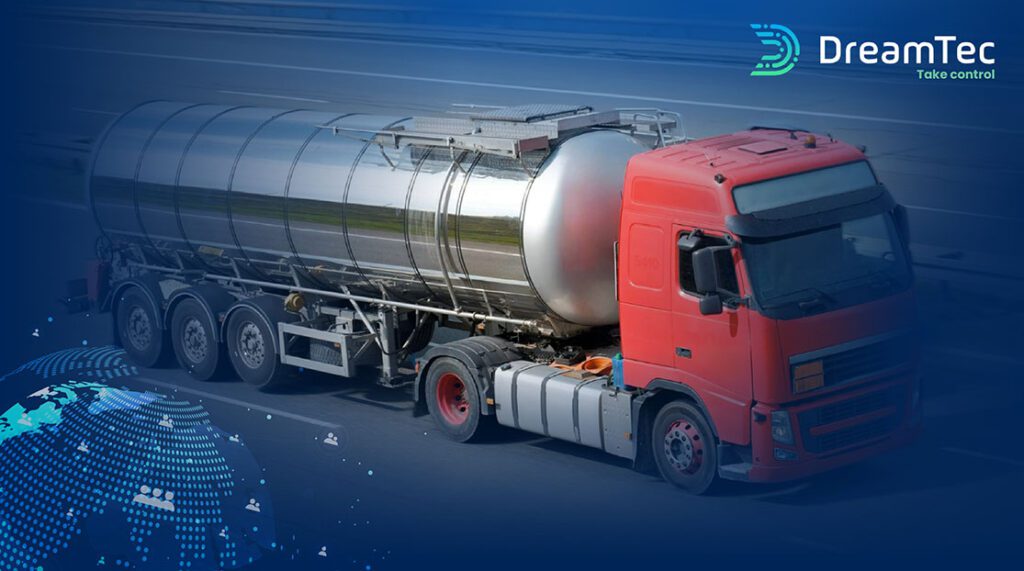
Fuel distribution is a growth sector currently, as we know. The conversion to cleaner and greener energy is at a halfway point at the moment, where fossil fuels are still in the picture, but governments are pushing for the cleanest options, where possible. Growth also means competition. Indeed, more players are entering this market and vying for a piece of the pie.
What is it that will sift the successful players from those who shut their doors under the pressure?
Data
Technological advancement has changed logistics operations massively. And the key in this sector is the data that allows for operational excellence in distribution: from stock management, to administrative efficiency and quick decision-making, to customer service and satisfaction, all within the boundaries of industry compliance.
Traditionally, this has been an industry slow to adopt technological advancements. And many players, who have been around for ages, will wonder “why fix what isn’t broken?”
And so far, they may be right.
Implementing change can be costly and lead to all sorts of glitches if not done correctly and with the right technology partners. It can seem like an insurmountable problem to be put off for another day.
In today’s competitive market however, manual processes will hold back those distributors who are reluctant to adopt improved practices.
The issue with manual processes
From oil-price fluctuations to customer delivery details, manual operations and decision-making are often outdated and problematic. Imagine two organisations: one using traditional, paper-based and manual operations, and one using technology and data to drive their strategy and actions. We’ll call them Company A and Company B respectively.
In a pretty realistic scenario, one we’ve seen frequently in the last few years, global fuel prices are impacted by geopolitical struggles . A quick pivot in pricing is required. In a radical case like this, Company A might scramble to make changes. Communication to various parts of the business will be sluggish and cumbersome and possibly fail, and system changes might cause panic, stress and errors.
What about slightly more subtle influences, like seasonal fluctuations, or growth/decrease in demand in a particular geographical area? Will Company A miss the patterns that build up a historical flow? Company B won’t miss these patterns, because they have the historical data to build a picture of trends, and they will be able to maintain stock levels through automated systems without tying up capital in unnecessary stock, while also ensuring customer satisfaction.
Company A requires manual data entry, from initial delivery schedules to fuel estimations, to actual delivery details. Not only does this open up data inaccuracies and errors, it also delays information getting back to the admin team and other key teams. The details of delivery will have to be brought back to the office with the driver on paper, which could be hours later or even the next day.
Company B’s systems bypass manual processes completely, and the staff back at the office have visibility in real time. They can communicate with a client proactively in the case of delivery delays due to issues en route, for example, leading to improved customer care and satisfaction. They’re also able to invoice the customer immediately on delivery. Stock flow tracking also ensures security in an industry where theft is not uncommon, and stock is visible from the depo to client delivery. The driver isn’t trying to fill forms and ensure admin boxes are all ticked – he focuses on his delivery.
Management decision-making is driven by data, in Company B. Inventory, demand fluctuations, fleet management and route planning, as well as pricing are all elements of the supply chain that can be (and should be) managed in real-time. The agility and quick response time that technology systems enable is what will ensure that Company B remains competitive in this growth market.
What can data really do?
In this industry, digital transformation means being able to continuously collect vital information , analyse it and plan strategically based on the data. It allows for transparency of distribution activities and stock and resources can then be managed effectively for optimal business operation.
DreamTec Systems offers an onboard truck computing device that links into existing ERP systems and provides benefits such as:
Supply chain visibility in real time: the journey of a fuel delivery can be monitored and tracked from beginning to end. This includes the physical tracking of the fleet, and of fuel as it’s loaded and unloaded. Any issues that are flagged – be it delays, or safety and security risks – are visible to the team back at the office, where they can be dealt with immediately.
Task automation: the admin load is reduced, from data input to invoicing, creating greater efficiency and mitigating the risk of errors as data is pulled directly from the device. Technology that is linked seamlessly across systems and departments creates a more cohesive environment generally, with slicker operations and better communication.
Data collection and analysis: digitisation allows for the collection of data throughout the process for efficiency not just within the operation, but also for future planning. Patterns, trends, irregularities emerge clearly through analytics and can be used to sharpen the distribution business and drive decision-making into a smooth process. Resources are better allocated, routes may be tweaked, and the customer experience is improved.
Accurate and timely data offers insight into the operations that can make the difference in this industry of fine margins.
Dynamic agility, adaptability, and resilience will be the drivers of success for fuel distributors.
And the driver behind that?
Data.
Contact us for more information. Our team would be delighted to chat with you on how to use the power of digital to future-proof your fleet fuel management system.




